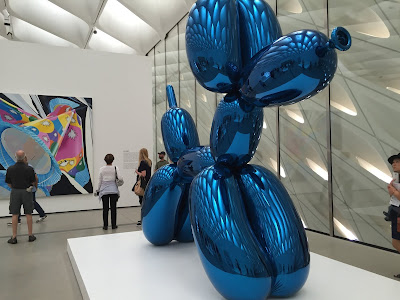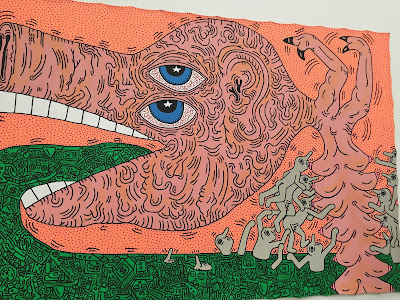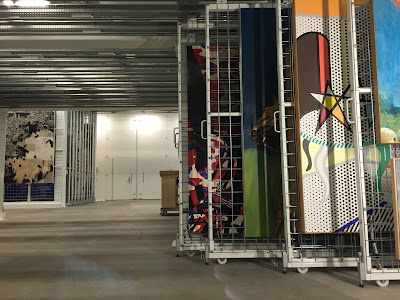Editor's note: I did very little work here. All writing and pictures are Vy's.
Time
Seeing my younger cousin get married stirred up a lot of feelings for me. It was a reminder that time doesn't stop, and everyone will continue to move on with their lives. Thinking about it sometimes makes me sad because I want to be cancer free and live a normal life too. However, I don't think I'll live long enough to get married or have children.
Have you ever watched Final Destination? It's about a group of people who initially cheat death, but Death later takes the lives of those who were meant to die. That's how I feel sometimes. Since my cancer diagnosis and surviving septic shock, I'm just living on borrowed time. Andrew thinks I'm ridiculous to even think that, and to base my life after a B-movie. In all fairness, he may have a point considering it only got 34% on Rotten Tomatoes.
Aside from good health, the next most important thing that I wish I could have more of is time. I don't need fame, fortune, or power because without time, you can't live to enjoy any of that. Time is an interesting concept. For the most part, it seems to go faster as I get older. The only time that it slows down is when I'm in the hospital. The seconds, minutes, and hours seem to drag on for eternity.
When I was initially diagnosed five years ago, the first thing I wanted to know was how long I had to live. My oncologist couldn't give me an answer since each case was so different, and the best she could do was refer me to a synovial sarcoma survival nomogram used by Memorial Sloan Kettering . Essentially, this was a statistical tool which predicted the chance of a person surviving three years and five years after being diagnosed with synovial sarcoma. Below were my results:
I had a 67% of dying in the first three years, and a 79% of dying in the next five years.
I was completely floored with the results, and had to recheck it a few times to make sure I had entered the numbers correctly. I knew having cancer was bad, but in all honesty, I didn't expect it to be that bad. I felt like the odds were stacked against me, and that I didn't stand a chance at beating this monster.
It's been five years now, and I'm still here. What I've learned is that nothing is guaranteed. From a statistical standpoint, I do have a lower mean survival in comparison to someone who doesn't have cancer, but that's all it is, just numbers. Whenever we step out of the house, we put ourselves at risk. We can't control other people's actions, or know the impact they'll have on our fragile lives. Life is unpredictable like that.
The only thing we can do is to live a life without regret. I do this by reexamining and simplifying what's truly important to me. What I've discovered is that the materialistic items I thought made me happy really don't. While it's always fun to go shopping, it turns out that what I value above all are my experiences with the people I love. These experiences can range from lounging on the couch watching TV, or traveling to new places. That's all I really need; being surrounded by my loved ones.
Sometimes it's hard to remember this because I do compare myself to the next person. What we need to understand is that what we see, especially through social media, is not necessarily the truth. The majority tend to discuss and post the highlights of their lives, and not their low points. We don't know what the other person is going through, so we shouldn't automatically assume that their lives are better than ours. Everyone is different, and we should be happy with who we are and what we've accomplished.
LA Round 2
By this time, I had been flying to Los Angeles for treatment by myself a few times already. This is normally how it went.Day 1
- After a normal workday, I'd catch a flight out from Oakland/San Francisco to Los Angeles.
- Jamie would pick me up from LAX, and we'd drive to her house in Santa Monica where I'd spend the night.
- The next morning, I'd go to HemaCare to get my blood work done.
- Afterwards, I'd head to the Sarcoma Oncology Clinic. From Van Nuys to Santa Monica, it would take about 45 minutes, and by this time, the clinic would have my blood test results. If everything came back good, I could begin treatment.
- Treatment would take approximately 4 hours. If I finished early and was feeling well, I'd try to do something fun. Otherwise, I'd rest back at Jamie's place.
- After Jamie was finished with work, we'd have dinner together and then she'd drive me to LAX.
Overall, I'd only miss 1 day of work for treatment. I was really able to maximize my time by arranging my flights in the evening, utilizing riding sharing services (Lyft/Uber) versus car rentals, and most importantly, scheduling and arriving early to appointments.
Scheduling appointments in the morning means doctors haven't seen many patients and haven't fallen behind yet. They're more likely on-time, and so I often wait less. If I happen to arrive early, I still check in, and ask nicely if I'm able to been seen earlier. Sometimes I get lucky, and sometimes I don't. Most of the time though, it works!
Scheduling appointments in the morning means doctors haven't seen many patients and haven't fallen behind yet. They're more likely on-time, and so I often wait less. If I happen to arrive early, I still check in, and ask nicely if I'm able to been seen earlier. Sometimes I get lucky, and sometimes I don't. Most of the time though, it works!
While flying to Los Angeles every other week for immunotherapy treatment wasn't ideal, it was far and away better than having to be hospitalized for a week of chemotherapy. I got a chance to spend more time with my bestie, and be an LA tourist. Enjoy!
The Broad
The Broad is a contemporary art museum founded by philanthropists Eli and Edythe Broad. It's home to more than 2,000 works, and offers free general admission!
Up we go!
Christoper Wool. Untitled, 1990.
Untitled features the words "Run" and "Dog" across a series of nine aluminum panels. The arrangement of the panels changes as the words are reordered such as "Run Dog Run, " and "Dog Run Run."
Andy Warhol. Two Marilyns, 1962.
The image captures the tragic headline of Marilyn Monroe's death. The silkscreen deteriorates with each printing, acting as a physical metaphor for the waning of fame and the fading of memory.
Jasper Johns. Flag, 1967.
Jasper Johns had a dream he painted a flag, and so he made his dream come true! The first flag was painted in 1954 towards the beginning of the Cold War, and this version of the flag painted during the Vietnam War. Does the meaning of the flag change when the flag is on canvas?
Untitled was an important step in Rauschenberg's development as an artist. His use of everyday objects continued to evolved, resulting in a hybrid of painting and sculpture known as Combine paintings.
John Baldessari. Tips for Artists Who Want to Sell, 1966-68.
In 1966, art meant painting, sculpture, or drawing, and with wry humor, Baldessari challenges this expectation by having the painting completed by sign painters.
Cy Twombly. By the Ionian Sea, 1988. Untitled (Rome), 1987.
Many of Twombly's inspirations come from the ancient world: the plays, poems, and histories that constitute both western and eastern traditions.
Cy Twombly. The Rose (V), 2008.
In the last decades of his life, Twombly incorporated washes of color in his paintings, adding a sense of gravity and luxuriousness to the work.
Roy Lichtenstein. I...I'm Sorry!, 1965-66.
Eve is depicted as a modern-day woman. Lichtenstein renders her apology unclear. Is she apologizing for eating the forbidden fruit from the tree? Is she breaking our hearts?
Roy Lichtenstein. Coup de Chapeau II, 1996.
Jeff Koons. Michael Jackson and Bubbles, 1988. The culmination of Koons' Banality sculpture series, this sculpture is a reinterpretation of the style of the classical masters of Italy.
Jeff Koons. Balloon Dog (Blue), 1994-2000.
As part of Jeff Koons' Celebration, Balloon Dog (Blue) is his most imposing work. When standing close to it, one's own distorted reflected bends around smooth pert curves.
Lari Pittman. Like You, 1995.
The work depicts an event in full swing, and upheaval of order. The overflowing canvas presents nuanced complexities, perhaps a riot or a parade with androgynous thong wearing reveler.
Barbra Kruger. Untitled (Your Body is a Battle Ground), 1989.
Simultaneously art and protest, this piece is striking and timeless. This was created in reaction to increasingly restrictive abortion laws, but it makes me think about the battle in my body with the cancer.
Jenny Holzer. Inflammatory Essays, 1979-82.
This work is the amalgam of posters the artist created and displayed around New York.
Robert Therrien. Under the Table, 1994.
Therrien fuses Alice's Adventures in Wonderland with the Duchampian tradition of the readymade. The table stands at 10 ft. tall and conjures up the memory of what it felt like to be under the table as a small children.
Keith Haring. Untitled, 1984.
Untitled presents a critique of the excesses of capitalism. The overtired pig is suckled by little men born out of the creature's own vomit. The cyclical image leaves no one in control and no way out.
Kara Walker. African't, 1996
Walker's work examines the horrors of slavery before, during, and after the Civil War. She explores a twisted landscape of subjugation, depravity, and desire.
El Anatsui. Red Block, 2010.
The elaborate work hangs like tapestries referencing kente cloth, all-purpose pieces of fabric used in Nigerian and sub-Saharan African culture. It's crafted from bottle caps, reused aluminum commercial packaging, copper wire, and other materials.



















































